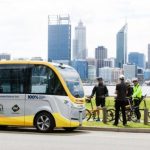Human factors limit smart cities more than technology
Human factors limit smart cities more than technology

While the latest smart gizmo tends to grab headlines, industry experts are urging urban leaders to focus more on smart city challenges with their citizens, rather than the technology, said attendees at the VERGE 16 conference in Santa Clara, Calif. where leaders in the smart cities space gathered.
A key sentiment that emerged from the conference was that leaders in government and industry need to stay focused on the larger smart city picture and not get caught up in the latest gee-whiz technology.
Specifically, there needs to be greater focus on meshing emerging tech with the current political and economic systems that affect citizens.
“The technology solutions are there,” said Kirain Jain, Chief Resilience Officer for the City of Oakland. “What we’re really looking at are governance issues.”
The proliferation of new smart city platforms and equipment is driven partly by the increasing ease at which they are integrated into city infrastructure.
However, government leaders are being urged to develop technology strategies around citizens’ needs first rather than prioritizing the technology and figuring out whether public benefits later.
“We just put out an RFP last week that had the words ‘user-centric design,’” said Jain.
Cities needs to evaluate their strategies
The shift from technology-centric strategies to user-centric mindsets also requires a realistic assessment of which populations of the city are actually benefiting from these innovations.
Specifically, local leaders must recognize that many smart city innovations are providing benefits to the better off segments of society. Meanwhile, those citizens struggling with poverty may not see much benefit at all from technology that makes the morning commute more pleasant.
“A lot of our focus has been on moving the top 20% of the market,” said Kimberly Lewis, senior vice president of the U.S. Green Building Council. “We thought the trickle-down effects would really begin to affect low- and moderate-income communities.”
She says key challenges are being exacerbated by assumptions that any smart city technological advancement automatically creates mass impact on the entire city population. However, it’s becoming clear that smart city technology is not a magic wand that can be waved to eliminate persistent challenges faced by poorer citizens.
For example the community solar concept is beginning to gain traction in various markets, depending on the resources of those who wish to invest. However, this raises the issue of how to increase accessibility to financing for those communities who lack the resources to develop solar projects.
The post Human factors limit smart cities more than technology appeared first on ReadWrite.
(29)














